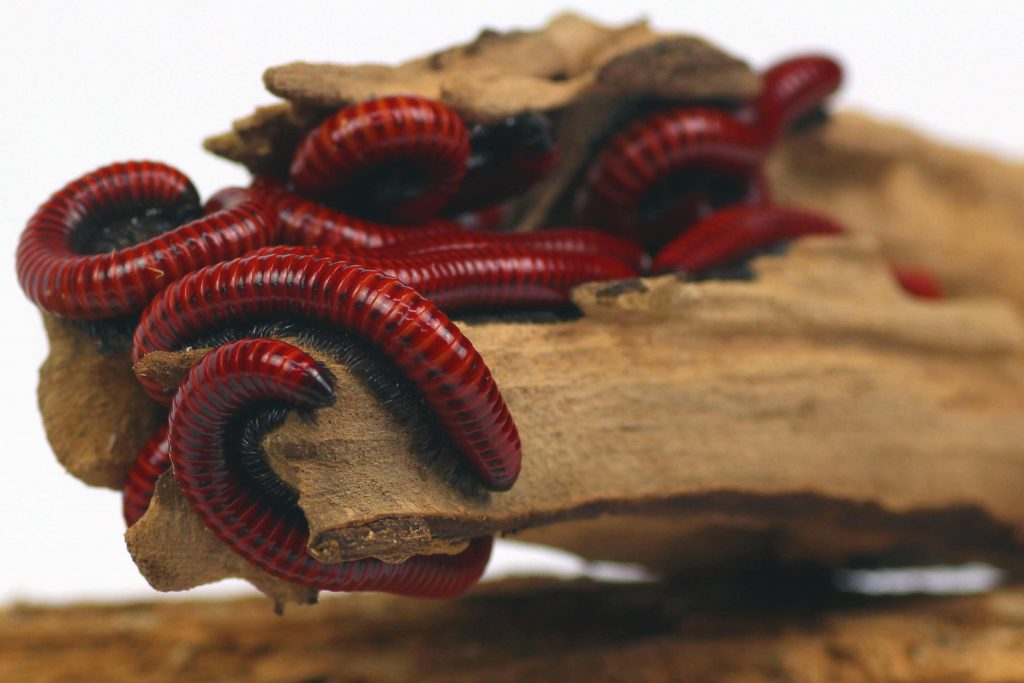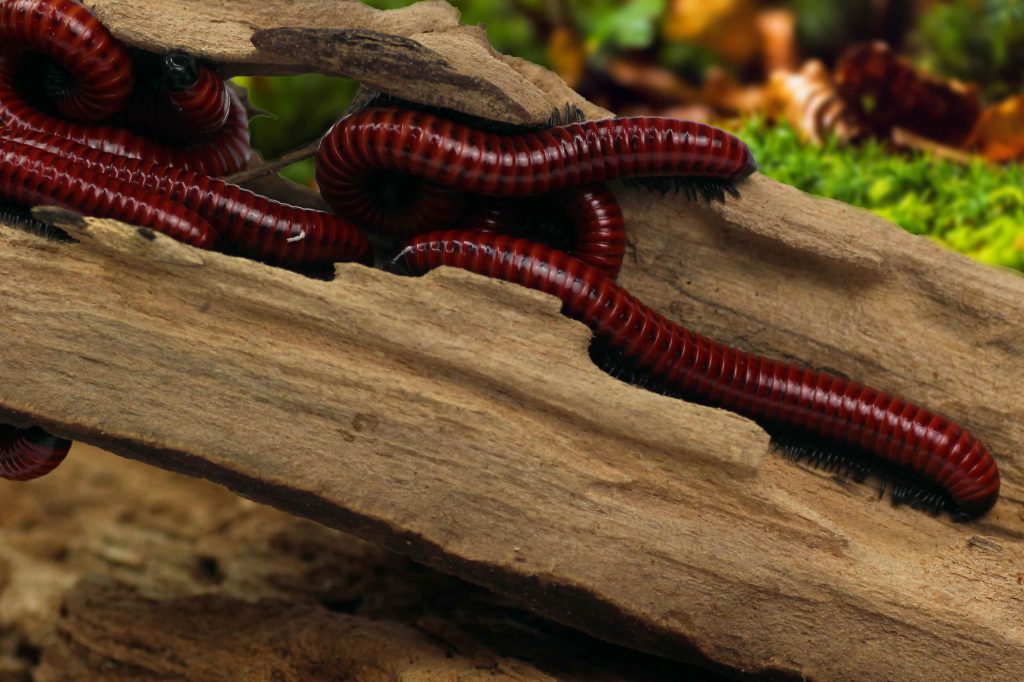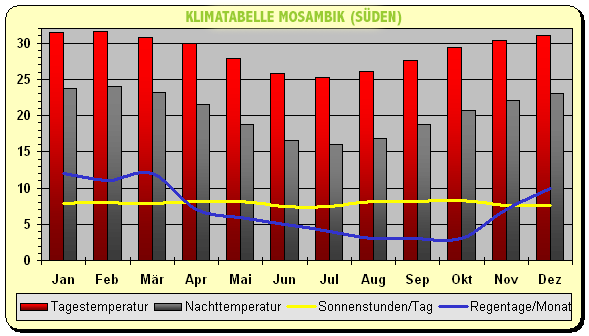Centrobolus spec. “Mozambique”
Name: Centrobolus sp.
Order: Spirobolida
Family: Pachybolidae
Suborder: Centrobolinae

Origin:
- KwaZulu-Natal (region in the northeast of South Africa)
- Mozambique (South, bordering South Africa)

Temperature:
- during the day 24-28 °C
- during the night 21-24 °C

Size:
- Length up to 6cm
- Width up to 6mm
- Segments 44
Social Behaviour:
Centrobolus spec. “Mozambique” is an extremely active beginner species. When looking into the terrarium you can always see animals walking on the ground or climbing branches. Therefore it is advisable to offer this Diplopoden species plenty of climbing possibilities.
They like to eat tunnels into large pieces of dead wood, in which they like to stay in groups. In general, it is noticeable that Centrobolus spec. “Mozambique” frequently occur in groups. Therefore I advise you not to keep this species individually.
Sometimes you want to take your animals in your hand. Be it to recognise the gender or to check whether the moulting went smoothly. Centrobolus spec. “Mozambique” behaves absolutely calmly and not fearfully at all. On the contrary, they are still very active on the hand or fingers. It has never happened to us before that we had secretion on our hands afterwards. Even with the sex determination they remain loose and you can easily check which gender it is.
Tank:
Up to 10 Centrobolus spec. Mozambique can be kept in a container of 30 cm x 30 cm x 40 cm. The substrate height should be at least 10 cm so that the animals can bury themselves without any problems. This is especially important during the moulting phase, as the animals moult in the forest leaf humus.
If you use a plastic box, you should drill enough air holes in the container. You should keep in mind that a humidity of 60-80% should constantly be kept.
When climbing with branches, you should be careful not to simply place them on the ground. This creates the danger that the animals will undermine the supporting areas and the branches will fall over, causing damage to the animals.
In order to avoid this beginner’s mistake in advance and still offer your Centrobolus spec. “Mozambique” a safe climbing opportunity, you simply place the branches on the terrarium floor when setting up the terrarium and then fill up the substrate. If you already have an existing terrarium, you can of course simply push the substrate to the side and place the branches on the bottom of the terrarium. By the way, everything that has dried completely and is stable enough for the animals is suitable as branches.
Breeding:
If all keeping parameters are correct, one can observe Centrobolus spec. “Mozambique” very frequently while mating. Occasionally, however, difficulties can arise with the reproduction. These problems are noticeable if you can never observe animals mating. Then, it is recommended to lower the night setback to 16-18 degrees in winter. This simulates the prominent northeast monsoon which brings humid air masses and precipitation in the months November to March. Thi is the time when eggs are laid in the wild.
It is advisable to leave the larvae in the adult animals’ boxes and raise them, as they feed on the faeces of the older animals right from the beginning.
Special Features:
In contrast to other Diplopoden species they eat almost no vegetables!
Fruit, especially bananas and apples, are occasionally eaten. Therefore it is better to feed smaller pieces so that there is no mould in the terrarium.
To do this, they ingest a great deal of protein in the form of protein pearls. Although Centrobolus spec. “Mozambique” is a relatively small species, it is the species that absorbs the most proteins. The offspring also comes from the ground during protein feeding and likes to consume plenty of granules.

Tip:
When changing protein food, make sure that there are no more larvae in the food bowl.






